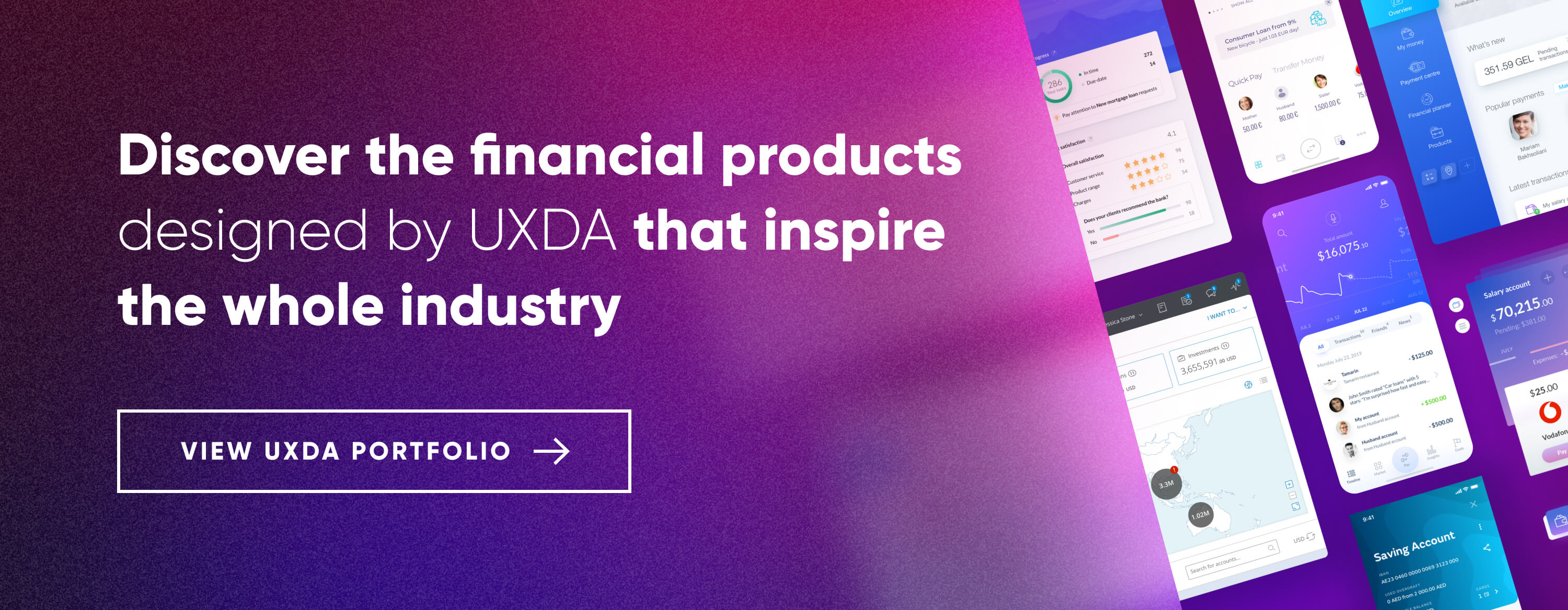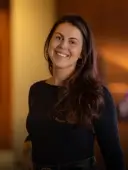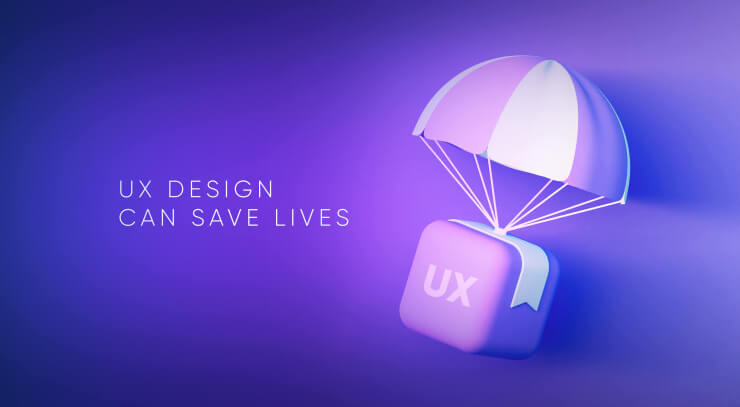Most people can remember a situation in their lives in which they experienced a huge amount of stress when dealing with money. Whether it was a bad encounter with online banking, a struggle when planning a budget or keeping track of spending, the majority of us can relate. But, how often do we wonder about how these situations can impact our lives, and those of our families and loved ones? In order to create a life-saving financial design, it's vital to understand the role that emotions play when it comes to money.
Poor Financial UX Could Lead to a Dreadful Tragedy
On June 12-th, 2020 a 20-year-old Nebraska college student Alexander E. Kearns committed suicide after misinterpreting the interface of millennial-focused stock trading app Robinhood that showed he had a negative cash balance of $730,165.
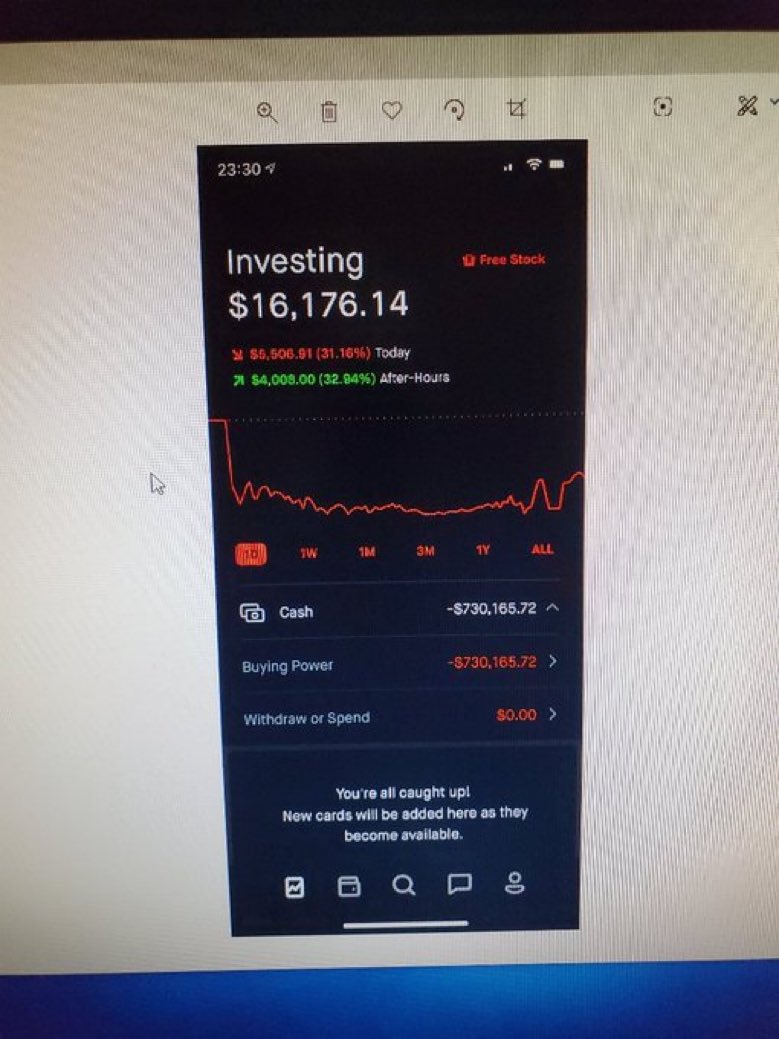
Screenshot of Alexander Kearns mobile phone, published by Bill Brewster in his twitter account @BillBrewsterSCG, June 17, 2020
Bill Brewster, Sullimar Capital analyst related to Kearns family, in his comment to CNBC criticized the way Robinhood displays trade summary: “When you’re dealing with retail money and actively soliciting traders under 30 years old, to have errors like this is inexcusable and at the minimum negligence.”
In online published suicide note, Alexander Kearns asks: “How was a 20 year old with no income able to get assigned almost a million dollar's worth of leverage?"

Screenshot from Bill Brewster twitter account @BillBrewsterSCG, June 17, 2020
While Robinhood app displayed in red Kearns’ negative $730,165 cash balance, it showed his temporary balance and would be corrected after the stocks underlying his assigned options actually credited to his account. But it seems Kearns unfortunately did not know about such nuances of options trading. A small pop-up with an explanation could stop the tragedy.
Personal budget, money management and financial trading are a highly sensitive topics and not something we tend to discuss with people around. Money has a major impact on our lives. Even a minor user experience problem in financial user interface can cause major consequences. A well-designed financial user experience could save relationships, families and even people's lives.
Money is Causing Dramatic Emotions That Ruin Lives
Financial institutions, such as banks and Fintech companies, are seeking solutions. Many are already doing a lot to help their clients have a pleasant financial experience and manage their money by offering various easy-to-use solutions. However, according to a survey from Independent, in 2018, money worries are still the leading cause of marriages falling apart.
Another study named “Love & Money” from SunTrust Bank showed that that Finances are the main reason of stress in relationships, where 35% of all respondents who experienced relationship stress named money to be the main factor causing issues. On a more positive note, this is a chance to inspire Fintech companies and banks to conduct research into how and why people make bad financial decisions.

Infographic from SunTrust.com Newsroom
A while ago, I heard a story from a friend about a family who experienced a lot of struggle due to financial problems and eventually broke up. The reason for this divorce was not because the parents hated each other. Rather, they hated conflicts about the irrational behaviors that occurred, and how they couldn't control each other financially. Both parents in this family were working and received their monthly salaries on a regular basis. However, after receiving their salaries, they made many impulsive purchases, resulting in unpaid bills at the end of the month and each others confrontation. Both of them felt like there was nothing wrong with their irrational spending. Moreover, they did not even realize that their own purchases weren't reasonable in the first place. Instead, they were trying to justify and rationalize their behavior. In conclusion, the husband and wife had multiple disagreements and decided to divorce. Due to difficulties, divorce and financial struggle, the life of this family was destroyed.

But, what if a third party had been involved? Something that could assist them with their finances by giving feedback and insights about their budgeting, help to manage their spending and potentially eliminate future errors? What, then, is the chance that this family would still be together?
Recently, I watched an interesting episode of a TV show called ''Planet of the Apps,” in which new startup companies present and defend their app ideas in the hopes of receiving funding. One of the judges, actress Jessica Alba, commented as follows on a personal finance management app that was presented: “As a kid who grew up in a home that was living paycheck to paycheck, if they only had this tool, 90% of the arguments in my house wouldn’t been about money.”
Hearing real stories like this can make us truly appreciate the opportunities that well-designed modern technology can offer. Back in the day, people did not have access to a personal finance manager that was just within their reach─on their smartphones. Needless to say, the times have greatly changed, but the financial problems in families still exist.
Knowing this, it is now the responsibility of Fintech companies to design financial services that will help people to effectively manage their money in an effort to reduce or even eliminate negative emotions and frustration. Unfortunately, not all Fintech companies can understand and evaluate the impact and consequences of how certain financial situations can affect people's lives both positively and negatively.
It is critical to focus not only on designing the services as transparently, user friendly and simple as possible, but also on understanding how emotional finances can be for people and what dramatic feelings and reactions it can cause. Why do some people act irrationally when faced with a financial decision and cannot control themselves? When we place major significance on something in our lives, everything that revolves around it can easily cause strong emotions, such as alertness and unreasonable reactions.
Behavioral Economics as a Key to Financial Irrationality
Before I go into more detail about the reasons for these irrational decisions and behaviors, let me start by highlighting the idea of why we need to know them in the first place. Good designers can't get enough of the fact that, when designing a product, you start with the user and not technology. In order to bring real significant value that will leave an impact on society and even help to save families and improve people's lives, the key factor is to understand the user’s behavior, psyche and key pain points. Learning to empathize, understanding what problems need to be solved and then applying the technology will make a difference.
People like to think of themselves as rational consumers, and there’s a reason for each action we make. In reality, our minds can trick us into making choices that might seem logical, but actually don't bring rational value. These tendencies to think in a certain way that can lead people into deviations of rationality and good judgment are called “cognitive biases.”
For some people, the following fact might sound a bit harsh, but, according to behavioral economics, people can be and, in fact, truly are irrational beings who make poor, nonsensical decisions driven by emotions. The challenge, then, for product designers is to put great effort into analyzing the cause: why users do things the way they do, what motivates them and what are their habits and fears.
1. THE TRAP OF THE PATH OF LEAST RESISTANCE
You have probably seen this a lot when walking around the city. There's a beautifully made pedestrian walkway, and then there's an actual more efficient and desired footpath adjacent to it. The pedestrians will obviously choose the path that takes them from one point to another the fastest, thus being the less resistant one.
As stated by Dan Ariely, a professor of psychology and behavioral economics at Duke University, when it comes to making decisions, most people tend to look for the least resistant route, even when it's not always the best choice.
Behavioral economics can also be used when designing user experiences, in order to improve the financial decisions that people make in their everyday lives. If we think about people who constantly make irrational financial decisions, choosing the least resistant route can be influenced by a sense of easier and better decision-making.
As an example, let's consider a major decision that most people have to make in their lives━which financial service will be the right one for me? Whether it's a central or commercial bank, credit union, loan association or Fintech application, the first thing that user needs to do is to decide on a reliable and recommended service. In order for that person to make the best decision, company information and testimonials should be provided.
It is important for millennials today to understand the main goal of the financial company. Is it only to raise their profit or is it to create a pleasant and life-changing experience for their customers?
2. HUMAN FACTORS CAUSE "FINANCIAL EARTHQUAKES"
Experiencing certain fluctuations in financial situations, such as a sudden increase in wealth, is also the cause of human irrationality and unreasonable spending. A huge factor that made an impact on people's lives was the financial crisis of 2007-2008. Now more than a decade has passed; however, the effects of it are still being felt and can be greatly associated with the irrationality of human nature.
The “wealth effect” idea states that spending increases or decreases as the perceived wealth level increases or decreases. Thus, when people perceive themselves to be richer, they have a tendency to spend more. There's even a term called “sudden wealth syndrome,” in which people who become overwhelmed and start to overspend tend to make poor decisions that can even result in familial and financial ruin.
It is important to have a financial tool that can help manage finances and focus on the user’s needs. When we buy something new and desired, the pleasure center of our brain gets activated, resulting in quick and temporary boost. In situations like these, people often need to be advised and guided into making the right actions just as much as if they were in financial difficulty.
There are various ways in which well-designed apps also take advantage of behavioral economics and “nudge” people to save more by bringing rationality into their spending. For example, the app can give alerts if you're about to miss a payment or you've overspent your budget in a particular category, such as dining out.
Well-designed financial platforms that help users to maintain and improve their financial well-being are highly likely to acquire their loyalty and position themselves as a trusted advisor.
3. OUR BRAIN PRODUCES IMPULSES THAT DESTROY WELL-BEING
Do you know how your brain reacts when faced with a financial decision? Why does it work in a certain way? Is it logical, rational, cautious or emotional? A science called neuroeconomics seeks answers to these questions for financial choices we make by analyzing our brain and its functions. Understanding how our brains function and how we process information can also benefit the UX designers in order to create better financial experiences, resulting in smarter decisions.
Here's a test question: which goal is more important━buying a new iPhone now or saving that money for your retirement? This question might sound silly, but, in reality, our brains would often make us choose the first option in order to satisfy the current desire instead of a distant goal far in the future. However, what happens if we tend to satisfy our short-term desires too often and result in stepping out of our safe budget zone?
Research named “Brain battles itself over short-term rewards, long-term goals” conducted at Princeton University concluded that humans would rather make impulsive preferences for short-term rewards, caused by the emotional-based parts of the brain winning over the abstract-reasoning parts. As stated by David Laibson, Professor of Economics at Harvard University, the emotional brain has difficulties imagining the future, even though the logical brain can clearly see the consequences our current actions cause. In the words of D. Laibson: "Our emotional brain wants to max out the credit card, order dessert and smoke a cigarette. Our logical brain knows we should save for retirement, go for a jog and quit smoking.”
When designing a financial platform, a large focus should be placed not only on defining users’ goals, but also some limitations. The boundaries can be really helpful when we manage our family budgeting, monthly spending and rationalizing between shorter and longer-term goals.
A well-designed platform will help users reach their goals by implementing some basic rules, tips and information for alerts, which can be triggered when a goal measure is outside of some limitations. For example, when we receive a notification about a bill that needs to be paid, sometimes we keep postponing it and might even forget it. A new alert, after some time has passed when not paying the bill manually, would be for either an automatic bill payment setup or only requiring the user to click one button to pay the bill.
4. SOCIAL NETWORKS ARE A GREAT SEDUCER
Young people are faced with a lot of challenges when it comes to saving money. Due to the monthly apartment rent, utility bills and student loan payments, millennials have to carefully think about what financial decisions to make in order to manage their lives. Some factors, such as having a good role model when growing up and financial education, can help young people to examine money rationally and not go overboard. However, a huge factor influencing that is social media.
Of course, these platforms, without a doubt, can make a very positive contribution in our lives. They offer people a chance to have a voice, to create and share content and to connect with one another all around the world. But, what exactly happens when we regularly browse the thousands of pictures, videos and posts added and shared by our friends and strangers, and how does that impact our financial routines and habits?
The “Generations Ahead Study” by Allianz Life Insurance Company, which examined social media's impact on American spending habits, discovered that nearly 90% of millennial respondents admitted that social media creates a tendency to compare their own wealth or lifestyle to others. Fifty-five percent of people stated that they experience fear of missing out (FOMO). They feel inadequate about their own lives because of something they saw on social media, such as people with flashy lifestyles going on expensive vacations and posted branded clothing in Instagram stories.
As a result of all this, in an attempt to keep up with their peers, more people are spending excessive money on unplanned expenses. In many cases, this results in people living off of loans and declaring bankruptcy. A famous quote by the actor Will Rogers greatly captures the main idea behind why a lot of people experience financial struggle and act irrationally. “Too many people spend money they haven't earned, to buy things they don't want, to impress people that they don't like.”
A positive insight of this research states that 71% of millennials use “tricks” to save money, and 70% use online tools or apps to help them manage their finances. Developing good financial skills and using these tools at an early age can greatly increase our financial knowledge, allowing us to face and also conquer financial challenges in our adult lives.
How Well-Crafted Financial Design Fights Irrationality
For many people, organizing finances might seem like a daunting and complex task to undertake. It's not that easy, it requires time and, if you have to do it on a poorly designed financial platform, bam, you become a frustrated user. But, it does not have to be like that. Finance management, if designed correctly, can be simple, frictionless and result in positive emotions for us by holding users’ emotions to a high standard.
In fact, with the right tools, mindset and shared passion of improving people's lives, it's possible to design pleasant financial experiences, which can make people enjoy managing their money and controlling irrational spending. It can even be a fun challenge to cut the irrational spending in order to reach a new goal. Here are some examples of financial apps that provide a path to stepping into a brighter financial future.
MINT
Budgeting, goal setting, bill pay and money management app. With this app, you can see what you’re spending, where you can save money and learn how to track your bills. There's even an interesting story, published in CNBC Money of a man who was able to save $15,000 by using Mint.
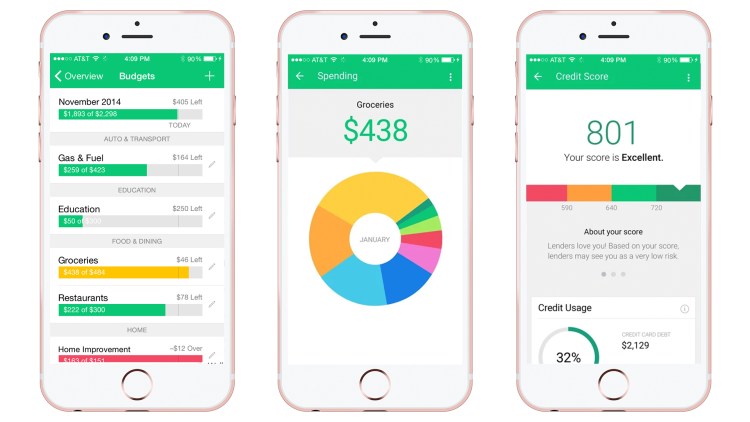
Screenshot from My Hot Mess Life Blog
Olivia AI
A personal finance app, powered by artificial intelligence and behavioral economics. This app acts like your personal finance assistant, by learning about you, your finances and habits and then giving unique insights for more rational spending.

Screenshot from dribbble.com
Qapital
Designed by Behavioral Economist Dan Ariely, is an app aimed at encouraging millennials to save. You can create some fun, money-based goals and add creative rules to them, such as the “Guilty Pleasure Rule,” in which you can save a certain amount when you spend at a specific store.

Screenshot from Medici Insights
Honeydue app
Helps couples manage their finances by offering a chance to connect both partner accounts and view all account balances in one place. A helpful function is to set limits for monthly spending on each category and get notified when you and your partner are nearing the limit. The couples can view each other’s transactions, leave notes on them and even send a thumbs-up to encourage healthy spending habits in their partner.

Screenshot from Honeydue.com
Twine
Another example that can be mentioned in the couples’ finance category. This app focuses on couples’ savings for major milestones in their lives, such as weddings, down payment and offers a chance to invest in simple portfolios specifically customized for their goals.

Screenshot from Twine.com
Current
An app that focuses on empowering the young generation to make better financial decisions. With this app, both parents and kids will be able to track their spending, set budget limits and learn more about financial responsibility. Using the app, parents can assign chores to kids with monetary rewards, and kids can even donate money to charities if they are so inclined.

Screenshot from macrumors.com
Acorns
A good app if you want to learn more about basic money investing. The app lets you link your debit card to it and invests your spare change into an investment portfolio that’s ideal for you, by taking in consideration your age, income, risk tolerance and other factors.

Screenshot from Acorns.com
These are just some of the examples of apps worth considering when thinking about benefiting customer's personal finance. Essentially, all of these apps offer ways to help save money and get finances under control. Determine the one that’s right for you and get set on the path to transforming your mindset and knowledge of finances, habits and even bank accounts.
As Financial Designers, We Should Take Responsibility for Customers’ Lives
In order to become successful, financial design needs to be fully focused on its users, users’ emotions and psychology. It's vital to understand the importance, value and impact that money has on people's lives. And, because of that, we sometimes tend to not know how to react and what to do in certain situations. Yes, we are irrational, we have emotions, but that is what makes us human. It is normal and healthy, and we can learn from our past mistakes and seek solutions for the future.
Digital finance tools can be the rational aid that the irrational and emotional side of humans often lack. It can help people make better decisions and take up the financial responsibility and consequences themselves, so they don't have to stress about it. On a larger scale, a well-designed financial service improves, changes and saves people’s lives. And who knows, maybe if the minimalistic Robinhood interface was more user-centered from the point of view of inexperienced young users, maybe the tragedy could have been avoided.
Get UXDA Research-Based White Paper "How to Win the Hearts of Digital Customers":
 If you want to create next-gen financial products to receive an exceptional competitive advantage in the digital age, contact us! With the power of financial UX design, we can help you turn your business into a beloved financial brand with a strong emotional connection with your clients, resulting in success, demand, and long-term customer loyalty.
If you want to create next-gen financial products to receive an exceptional competitive advantage in the digital age, contact us! With the power of financial UX design, we can help you turn your business into a beloved financial brand with a strong emotional connection with your clients, resulting in success, demand, and long-term customer loyalty.
- E-mail us at info@theuxda.com
- Chat with us in Whatsapp
- Send a direct message to UXDA's CEO Alex Kreger on Linkedin



